Born: Flintshire, Wales
Died: c. 660
Feast Day: November 3
I came across this amazing saint whom I had not heard of before. Go here or here for more of her story. Here's a short version of her life ~ and yes, I'm planning to add a visit to her "Holywell" on my must-do list before I die:
Saint Winefride (called in her native Welsh Gwenfrewi; in modern English Winifred and various variations) was the 7th century daughter of the Welsh nobleman, Tyfid ap Eiludd. She had her head severed from her body by an enraged suitor, Caradog. He was displeased because her religious devotion and a pledge to become a nun caused her to resist his advances.
In one version of this tale, her head rolled downhill, and, where it stopped, a healing spring appeared. These healing waters are now a shrine called St Winefride's Well in Holywell, the Lourdes of Wales. Saint Winefride's head was subsequently rejoined to her body due to the efforts of her maternal uncle, Saint Beuno, and she was restored to life. She later became a nun and abbess at Gwytherin in Denbighshire, after Caradog, cursed by Beuno, melted into the ground. More elaborate versions of this tale relate many details of her life, including Winefride's pilgrimage to Rome.
In spite of the slim records for this period, there appears to be a historical basis for this personage. Winefride's brother Owain is known to have killed Caradog as revenge for a crime. She succeeded the Abbess, Saint Tenoi, who is believed to be her maternal grand-aunt.
After her death (c. 660) she was interred at her abbey. In 1138 relics were carried to Shrewsbury to form the basis of an elaborate shrine. (This event was woven into A Morbid Taste for Bones, the first of Ellis Peters' Brother Cadfael novels.) The shrine and well became major pilgrimage goals in the Late Middle Ages, but the shrine was destroyed by Henry VIII in 1540.
A well named after St Winifred is in the hamlet of Woolston near Oswestry in Shropshire. It is thought that on her way to Shrewsbury abbey Winifred's body was laid here overnight and a spring sprang up out of the ground. The water is supposed to have healing powers and be good at healing bruises, wounds and broken bones. The well is covered by a 15th century half-timbered cottage. The water flows through a series of stone troughs and into a large pond, which then flows into a stream. The cottage is in a quiet, peaceful setting in the middle of the countryside, and is maintained by the Landmark Trust.
There is also another place where her body was laid and a spring sprang up. Holywell farm midway between Tattenhall and Clutton, Cheshire. There is a spring in the garden of this non working farm which supplies two houses with their drinking water. The water is very tasty.
A Norman church dedicated to Saint Winifred can be found in the village of Branscombe, Devon. There is some archaeological evidence to suggest an earlier Saxon church may have occupied the site.
English poet Gerard Manley Hopkins memorialized Saint Winefride in his unfinished drama, "St Winefred's Well."
In modern times, St Winefride has been unofficially adopted as the patron saint of unwanted advances, payrolls and payroll clerks.
Retrieved from "http://en.wikipedia.org/wiki/Winefride"
If anyone out there has ever visited St. Winifred's well, leave a comment and tell us about it!
St. Winefride ~ Pray for us!



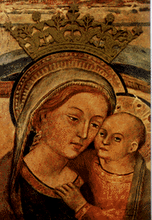




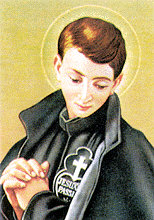
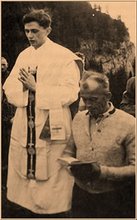

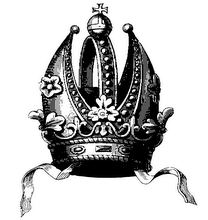
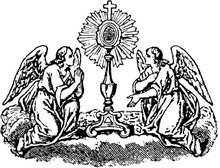
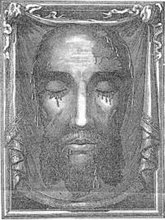







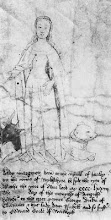01.jpg)




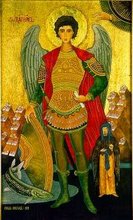






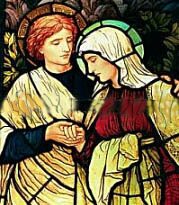













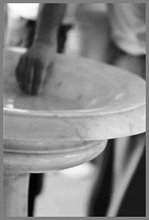



3 comments:
I love hearing stories about obscure medieval saints.
Hi, nothing obscure about Winifred in Wales-I also carry her name and the Cardinal has just made a pilgrimage here. The whole shrine is magnificent-exactly as it was in Mediaeval times. The Tudors were related to relatives who thought highly of it, and St Winefride(or Gwenfrewi) generated so much cash they did not destroy it! The Bridgettine nuns have opened an inexpensive guest house nearby and the pilgrimages more popular than ever!There is a museum of the shrine, with all the crutches at the side and history. A gift shop, modern toilets and at the shrine a chapel, a large pool, where you can dip in any time (bring your own towel!) and a leaflet with instructions as to the ritual. My leg did get better for a while but has lapsed so I might go to the Latin Mass Society Pilgrimage in August. The inside of the shrine is lovely, with amny votive stands burning all the time. Yesterday my family were at the pilgrimage to Our Lady of Penrhys in the Rhondda-another mediaeval Shrine and the three intercessors were Our Lady, Help of Christians, St David of Wales and St Winefride.Out of interest, the programme from the 'Cadfael'series from ITV with Derek Jacobi called 'A Morbid Taste For bones' has the beatiful Welsh Saint's relics as a theme, and actually visits the country around Gwytherin, where she was born. She is closely connected with her Uncle St Beuno.
Both their lives are recorded in the Book of Cambro British Saints, Beuno being related to the King of Brecon (Brycheiniog-Welsh for Brecon!) You will find the history of the origins of the Catholic faith in Britain as a whole on this blog, because St Peter sent St Philip to Gaul after the Ascension, And Philip sent Joseph of Arimathea to Britain. They landed in Wales and were given land in Glastonbury, where they went next, bringing with them the Grail(the real one!-)
Please visit my blog , www.maryinmonmouth.blogspot.com for more obscure mediaeval saints and the maryinmonmouth podcast from iTunes
Thank you so much for your comment and information Mary - I'll check your blog and keep this info handy for my visit to holywell.
Post a Comment